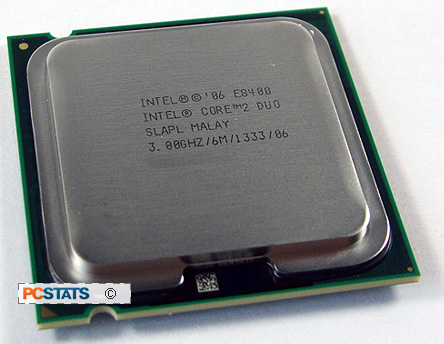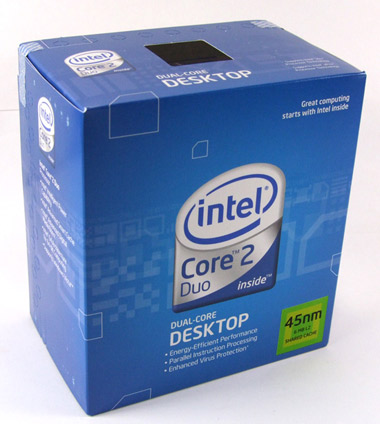 In this age
of quad-core processors, can a dual-core processor really cut it? CPU
manufacturers AMD and Intel have repeatedly emphasized that multi-threaded
applications are the future of computing, and that both companies will soon
relegate single and dual-core processors to entry-level markets. As quad-core
processors become more widely adopted in the mid-range and high-end, we're going
to see more developers taking advantage of them with multi-threaded software.
There are already a few bleeding-edge applications like Bibble that do this.
In this age
of quad-core processors, can a dual-core processor really cut it? CPU
manufacturers AMD and Intel have repeatedly emphasized that multi-threaded
applications are the future of computing, and that both companies will soon
relegate single and dual-core processors to entry-level markets. As quad-core
processors become more widely adopted in the mid-range and high-end, we're going
to see more developers taking advantage of them with multi-threaded software.
There are already a few bleeding-edge applications like Bibble that do this.
Right now, however, these applications are few and far
between. Most of the utilities, office applications and day-to-day software
that's on the average computer won't know what to do with extra CPU cores and
will be served by a processor with more cache or higher clock speeds.
Keeping this in mind, the spotlight is clearly on
Intel's family of Core 2 Dup E8000-series Wolfdale processors. The Core 2 Duo
E8400, with its 3.0GHz clock speed, 1333MHz FSB speed and 6MB of L2 cache,
remains a force to be reckoned with. In tests like Sysmark that test common,
real-world office applications, the E8400 was generally a little faster than the
Phenom II X4 955 and a little slower than the Core i7 920. All processors are
absolutely fast enough for average desktop applications likely to be encountered
in the office or at home. The same holds true during gaming, where the majority
of titles are more suited to high-frequency dual-core processors rather than
parallel quad-core processors.
 With a
current street price of $199 CDN ($170 USD, £113 GBP) the Intel Core 2 Duo
E8400 is $100 cheaper than the AMD Phenom II X4 955 and $150 than the least
expensive Intel Core i7 processor. While the quad-core processors can definitely
outclass the Core 2 Duo E8400 in certain scientific simulations, 3D rendering
and video encoding benchmarks, they just don't deliver as much everyday value as
a speedy dual-core processor.
With a
current street price of $199 CDN ($170 USD, £113 GBP) the Intel Core 2 Duo
E8400 is $100 cheaper than the AMD Phenom II X4 955 and $150 than the least
expensive Intel Core i7 processor. While the quad-core processors can definitely
outclass the Core 2 Duo E8400 in certain scientific simulations, 3D rendering
and video encoding benchmarks, they just don't deliver as much everyday value as
a speedy dual-core processor.
Under the hood, the Intel Core 2 Duo E8400 isn't
revolutionary. While the original Conroe E6000-series processors were
manufactured on a 65nm process, the Wolfdale chips are produced at 45nm.
Shrinking the chip has kept the E8400's power draw levels low, just 65W, so
under full CPU load it actually draws less power than lower-performing
processors. Intel has also added new SSE extensions, lower power states, and
better hardware virtualization support.
Overclocking the Intel Core 2 Duo E8400 was dead simple,
with only a minor bump in voltages required to move the processor from 3.0GHz up
to 4.05GHz when using the stock Intel cooler. While we didn't do any official
benchmarks at that speed, a 4GHz E8400 is enough to give the Core i7 920 a run
for its money in many single and dual-core applications.
Given the benchmark results I think it's safe to say two
things are clear. The Intel Core 2 Duo E8400 processor is handicapped against
triple and quad-core processors in tests that are multi-threaded. In standard
desktop applications that people use everyday, like Word or email, surfing the
web or doing spreadsheets, the Core 2 Duo E8400 is more than powerful, and a
very good value. While those that specialize in content creation may have
already embraced quad-core processing, most everybody else will find that a
speedy dual-core CPU like the Core 2 Duo E8400 is a better value.
Find out about this and many other reviews by joining the Weekly PCstats.com Newsletter today!
Catch all of PCSTATS latest reviews right here.
Related Articles
Here are a few other articles that you
might enjoy as well...
- AMD
Phenom II X4 955 Black Edition 3.2 GHz Socket AM3 Processor Review
- Intel
32nm Westmere Processor Roadmap - Integrated Graphics CPU
- Intel
Core 2 Duo E6750 2.66 GHz 1333MHz FSB Processor Review
- Intel
Core 2 Duo E6600 2.4GHz Processor Review
- AMD
Athlon64 X2 4800+ 65nm Processor Review
- Intel
Pentium M 740 1.73GHz socket 479 Processor Review
- AMD
Sempron 3600+ 2.0GHz Socket AM2 Processor
Review
